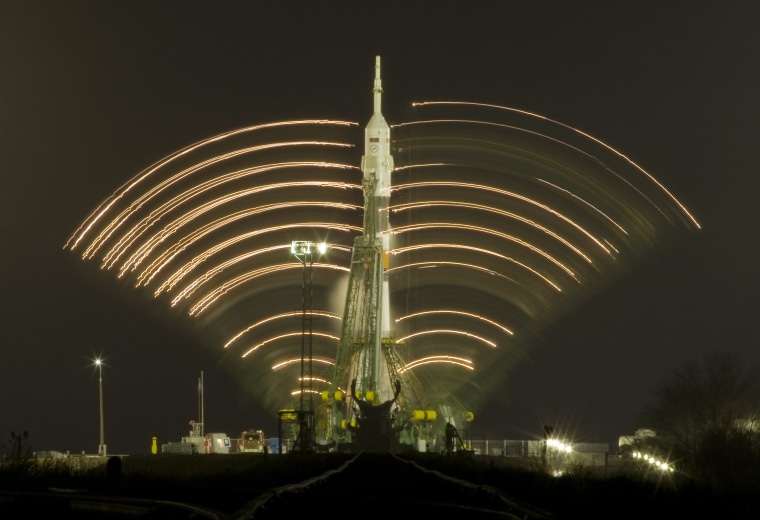A Russian rocket blasted off from a cosmodrome in Kazakhstan lighting up the frigid Central Asian steppe Monday, shuttling an American, a Russian and a Japanese to the International Space Station.
Standing in the early morning cold, the astronauts' family and friends watched as the Soyuz craft soared atop a tower of bright orange flames.
The Soyuz TMA-17's three astronauts will take the orbiting lab's permanent crew to five following the launch, the first-ever blastoff of a Soyuz rocket to the International Space Station on a December night.
Timothy J. Creamer, Soichi Noguchi and Oleg Kotov are to join current inhabitants, American Jeff Williams and Russian Maxim Surayev, who have been alone on the space station for three weeks.
This was a "spectacular launch, a great Christmas present," NASA spokesman Rob Navias said after space officials confirmed the rocket had entered into orbit. "A great way to finish the year."
A NASA Webcast showed the crew giving a thumbs up sign as the vessel hurtled skyward.
One minute into the launch, the rocket reached a speed of around 500 meters (1,640 feet) per second.
Slideshow 12 photos
Month in Space: January 2014
The Soyuz will travel for about two days before docking with the space station 220 miles (350 kilometers) above Earth.
Reporting to Russian space officials prior to the launch, the astronauts seemed calm and relaxed.
Speaking fluent Russian, Creamer thanked technical staff for their role in preparing for the expedition.
One of the main aims of the expedition will be to deliver a full-fledged module to the space station, complete with a seven-window cupola for prime Earthgazing, Navias said.
Striking a festive mood, the space station this week beamed a video Christmas greeting to Earth.
On its Web site, NASA has created a series of virtual postcards for members of the public to send to the space station with their holiday greetings.
Creamer, who is making his maiden voyage to space, has promised to keep people back on earth up to date via Twitter.
In a message posted from his mobile device just hours before the launch he wrote, "Will tweet soonest. Happy & Safe holidays to all!"
Noguchi is heading back to space for his second time and has become the first professional Japanese astronaut to fly aboard the Soyuz.
The first space station crew arrived in 2000, two years after the first part was launched. At first, the standard long-duration crew consisted of three people, but this year the full complement was expanded to six. As many as 13 people were aboard the station during space shuttle visits.
With the U.S. shuttle fleet set to be grounded soon, NASA and other international partners will have to rely on Russian Soyuz spacecraft to ferry their astronauts to the space station and back, at least for a while. NASA is in the midst of developing a new spacecraft called the Orion, and private-sector spaceships may be available as well for future crews. But those won't be ready by the time the shuttles are retired.
This report was supplemented by msnbc.com.

